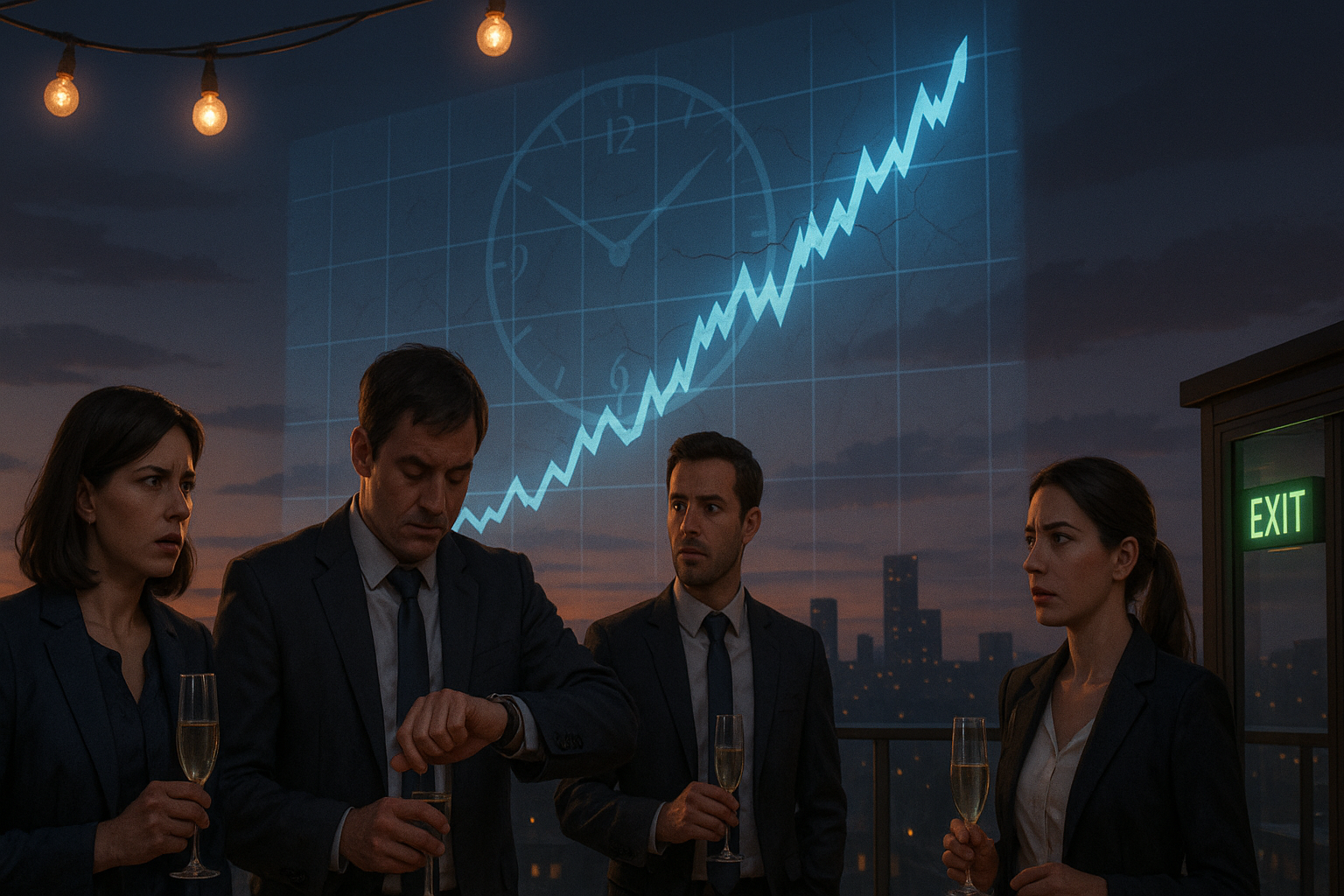Wall Street's party has been raging with champagne-popping fervor lately, but there's a growing sense of "morning after" dread creeping into conversations with the money-managing crowd. The S&P's 20% surge this year is starting to look less like a triumph of economic fundamentals and more like, well, irrational exuberance: The Sequel.
I've been working the phones with portfolio managers across Manhattan and Connecticut for the past two weeks, and the shift in tone is palpable. Back in June, these folks couldn't stop talking about "runway" and "momentum." Now? They're clearing their throats a lot and using phrases like "tactical repositioning."
Look, nobody wants to be the party pooper who leaves early, but when valuations stretch this far beyond historical norms, even the perma-bulls start glancing nervously at the exit signs.
"We're definitely in the later innings," muttered one hedge fund manager over coffee near Bryant Park yesterday, immediately grimacing at his own baseball metaphor. "I mean, not necessarily the ninth inning, but... you know what I'm saying."
I do know what he's saying. And so does everyone else who remembers how quickly sentiment can flip.
The problem isn't just the altitude of this market—though the air is mighty thin up here. It's the narrowness. This rally has been carried on the muscular shoulders of a handful of tech behemoths while the broader market puffs along behind them. That kind of top-heaviness rarely ends well.
What's particularly worrying to the institutional crowd is the disconnect between economic reality and market exuberance. The economy isn't terrible—unemployment remains low, consumers are still spending—but it's certainly not booming enough to justify current multiples. It's as if investors are pricing in not just a soft landing, but some kind of economic paradise where inflation vanishes painlessly and growth accelerates magically.
Having covered three major market corrections since 2000, I've developed something of a sixth sense for when expectations and reality start to diverge dangerously. We're in that territory now.
The conventional wisdom around Wall Street lately centers on the Fed's pivot toward rate cuts. Everyone—and I mean everyone—is expecting Powell & Co. to start easing monetary policy soon. But here's the thing (and I can't emphasize this enough): what happens if inflation proves stickier than expected? What if the Fed can only deliver two cuts instead of the five or six that seem baked into current prices?
That's when things could get ugly.
"The market's basically thrown a party to celebrate winning the lottery before actually buying a ticket," one particularly colorful strategist at a bulge-bracket bank told me last week. "We're all just hoping the numbers match up."
There's something else going on that few want to talk about openly—the boredom factor. After years of pandemic chaos, inflation scares, and geopolitical upheaval, investors are desperate for a simple, clean narrative. Tech stocks and AI provide exactly that—a future-focused story that feels safely removed from messy real-world complications.
But markets don't really do "clean narratives" for very long, do they?
The technical signs of market exhaustion are multiplying. Breadth indicators have been weakening. The VIX has been suspiciously low. Sentiment surveys show excessive optimism—always a contrarian red flag.
Some money managers are quietly de-risking without actually calling a top. One told me, "I'm not bearish, I'm just... less bullish than I was." Translation: He's selling but doesn't want to admit it.
What's missing so far is widespread capitulation from the bears. Short interest remains relatively muted. The skeptics have been beaten down so thoroughly over the past year that they're reluctant to plant their flag again. That itself is concerning—healthy markets typically feature robust debate between bulls and bears.
The pattern reminds me somewhat of 2007 (though the underlying issues are entirely different). Back then, the market kept making new highs even as the foundation was crumbling. The warning signs were there for those willing to see them.
Where does this leave investors? Caught between FOMO and prudence, mostly.
Perhaps the most sensible approach comes from a veteran fund manager who's survived multiple cycles: "Trees don't grow to the sky, but they can grow taller than you think. Just make sure you're not the last one standing when the music stops."
That's about right. This rally might have more room to run—momentum is a powerful force. But the risk-reward calculation grows less favorable with every tick higher in an environment where perfection is already priced in.
The growing unease on Wall Street doesn't guarantee an imminent correction. Markets can remain overvalued for extended periods. But it does suggest we're entering a phase where gains will be harder to come by and the downside risks are multiplying.
Sometimes markets don't need a specific catalyst to reverse course. They simply exhaust themselves—running out of new buyers willing to pay ever-higher prices for the same assets.
Are we there yet? Nobody knows for sure. But an awful lot of smart money is starting to act like we're getting close.
